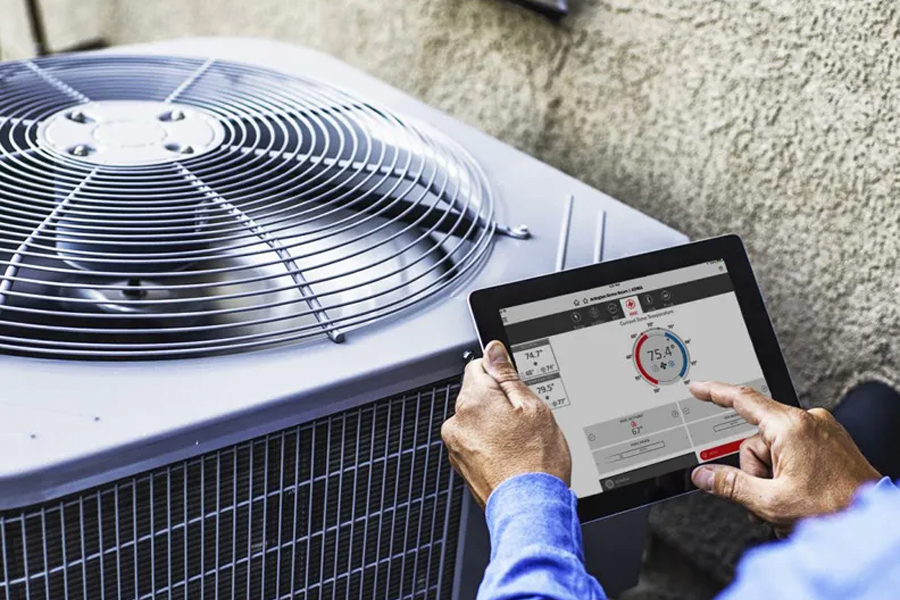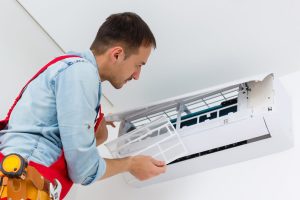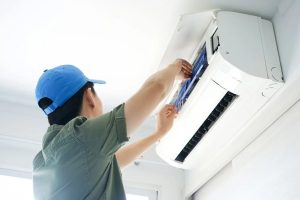
Image Source: www.coolingindia.in
In recent years, ductless heating and cooling systems have gained popularity as an alternative to traditional HVAC systems. These systems, also known as Ductless heating and cooling systems, offer several advantages and provide efficient heating and cooling solutions for homes and businesses. In this comprehensive guide, we will explore the features, benefits, and considerations associated with ductless heating and cooling systems.
What are the advantages of having such sort of systems?
When it comes to Ductless heating and cooling systems you should know that they consist of two main components: an outdoor compressor unit and one or more indoor air-handling units. Unlike traditional HVAC systems that rely on ductwork to distribute air, ductless systems deliver conditioned air directly into specific zones or rooms. Each indoor unit is connected to the outdoor unit via refrigerant lines and requires only a small hole in the wall for installation, making them versatile and suitable for various applications.
 One of the primary advantages of Ductless heating and cooling systems is their ability to provide zoned heating and cooling. Each indoor unit can be independently controlled, allowing users to adjust the temperature in different areas of their home or building based on occupancy and comfort preferences. This zoning capability enhances energy efficiency and reduces utility costs by avoiding the need to heat or cool unused spaces.
One of the primary advantages of Ductless heating and cooling systems is their ability to provide zoned heating and cooling. Each indoor unit can be independently controlled, allowing users to adjust the temperature in different areas of their home or building based on occupancy and comfort preferences. This zoning capability enhances energy efficiency and reduces utility costs by avoiding the need to heat or cool unused spaces.
Such systems offer greater flexibility in terms of installation compared to traditional HVAC systems. Because they do not require ductwork, ductless systems are ideal for retrofitting older homes or buildings where installing ducts may be impractical or costly. Additionally, the compact size of the indoor units and the minimal installation requirements make ductless systems a convenient option for various architectural layouts and building types.
The benefits of Ductless heating and cooling systems are highly energy-efficient, thanks to advanced technologies such as inverter-driven compressors and variable-speed fans. These features allow the system to adjust its output based on the specific heating or cooling requirements of the space, minimizing energy waste and maximizing comfort. Additionally, the absence of ductwork helps eliminate energy losses associated with duct leaks, further improving overall efficiency.
Traditional HVAC systems can accumulate dust, allergens, and other contaminants within ductwork, which can degrade indoor air quality. Ductless systems eliminate this concern by delivering conditioned air directly into the room without passing through ducts, reducing the risk of airborne pollutants and allergens circulating throughout the space. Some ductless models also feature advanced filtration systems to capture particulates and improve indoor air quality further. Ductless heating and cooling systems are known for their quiet operation, both indoors and outdoors.
The compressor unit is located outside the building, reducing noise levels inside the living or working space. Additionally, indoor units are equipped with advanced sound-dampening technology, ensuring minimal disruption to occupants while the system is running. Ductless systems typically have higher upfront costs compared to traditional HVAC systems, primarily due to the cost of the indoor and outdoor units, as well as installation expenses. However, the long-term energy savings and efficiency gains may offset the initial investment over time.

